
Combined Hormonal Contraception

Combined Hormonal Contraception
-
Pill (daily): Combined Oral Contraceptive (COC) - monophasic, biphasic, triphasic, quadriphasic.
-
Patch (weekly): Combined Transdermal Patch (CTP) - EVRA®
-
Ring (monthly): Combined Vaginal Ring (CVR)* - Nuvaring®
-
Recommended cyclic use of 3 weeks hormonal treatment followed by 1 week non-hormonal treatment
-
All contain oestrogen + progestogen
-
All contraindicated (WHOMEC 3/4) in migraine with aura, VTE, hypertension, breast cancer, IHD, stroke, smoker over 35 years old
* Currently not available locally in Singapore
Contraceptive choice - What to consider .......
-
Age
-
Any medical contraindications?
-
Any headaches?
-
Sexual history
-
Interacting medication?
-
Menstrual history / bleeding patterns
-
Acne?
-
Smoking?
-
BP and weight
-
Family history
..........How to choose?
-
Know basic facts about the method and how it works / side effects
-
Know any contraindications: WHOMEC
-
Consider non-contraceptive benefits
-
Consider PATIENT's CHOICE
WHO Medical Eligibility Criteria (WHOMEC) For Contraceptive Use 2015
Grading Recommendations
-
Evidence based on randomised controlled trials
-
Evidence based on other robust experimental or observational studies
-
Evidence is limited but the advice relies on expert opinion and has the endorsement of respected authorities
Good Practice Point where no evidence exists but where best practice is based on the clinical experience of the multidisciplinary group
Oestrogenic and Progestogenic side effects
Oestrogenic
-
Breast tenderness / enlargement
-
Weight gain (fluid rentention)
-
Nausea
-
Bloating
-
Some headaches (PFI)
-
Chloasma
-
Noninfective vaginal discharge
-
Photosensitivity
-
Loss of libido
Progestogenic
-
Acne
-
Greasy hair
-
Weight gain (increased appetite)
-
Hirsutism
-
Depression/mood swings
-
Loss of libido
-
Vaginal dryness
Which combined pill? – Consider the effects of androgenic activity
-
Androgenic activity (Highest to lowest):
-
Levonorgestrel / Norethisterone > Norgestimate > Desogestrel / Gestodene > Drospirenone /Dienogest > Cyproterone acetate*
*Also licensed as treatment for other androgen-dependent conditions
Menstrual cycle regulation by hormonal pathways
-
Hypothalamus releases GnRH, stimulating the pituitary
-
FSH slowly increases causing LH surge that stimulates ovulation
-
Estrogen and progesterone provide negative feedback to the hypothalamus and pituitary, turning off GnRH, LH and FSH release
GnRH = gonadotropin releasing hormone ; FSH = follicle-stimulating hormone; LH = luteinizing hormone Used with permission from The Journal of Reproduction Medicine.
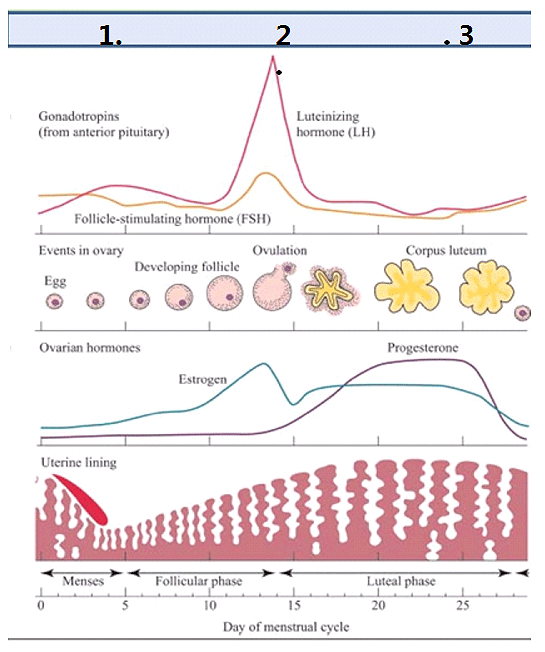
1Speroff L and Fritz MA. Regulation of the Menstrual Cycle. In: Clinical Gynecologic Endocrinology and Infertility; Philadelphia: Lippincott Williams & Wilkins, 20052Griesinger G et al. J Reprod Med. 2011;56:279-300
Combined oral contraceptive pills: mechanisms of action
Progestin: imitates progesterone increase in pregnancy
-
Inhibits ovulation by suppressing FSH and LH
-
Thickens the cervical mucus thereby preventing the migration of sperm into the uterus
-
Alters the endometrium, making it unsuitable for implantation even if the ovum is fertilized
Estrogen
Helps to maintain the stability of the endometrium and thereby decreases the risk of break-through bleedings
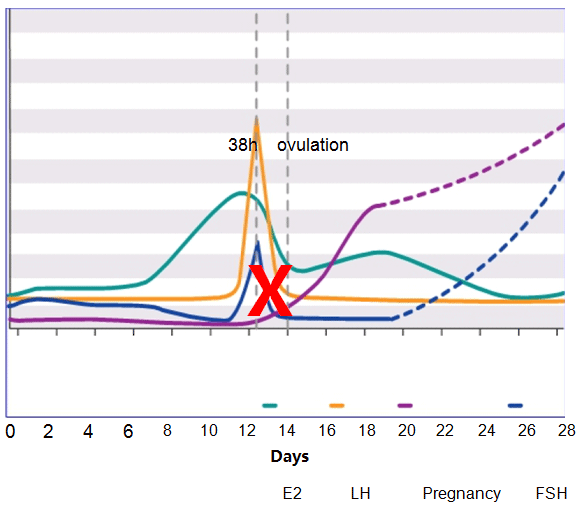
Speroff L. Oral contraception. In: Clinical Gynecologic Endocrinology and Infertility; Philadelphia:Lippincott Williams & Wilkins, 2005:861-942.
Long-term benefits of hormonal contraception
Health benefits
Fertility-related benefits
-
Prevent unplanned pregnancy
-
Protect against ectopic pregnancy
Menstrual benefits
-
Stabilize menstrual cycles
-
Reduce risks of iron deficiency by reducing HMB
-
Promote regular menstrual cycles
-
Relieve dysmenorrhea
-
Reduce pre-menstrual symptoms
ESHRE Capri Workshop Group. Hum Reprod Update 11:513-525, 2005
Non-contraceptive Health benefits
Protection from some cancers e.g. endometrial and ovarian cancers, up to 50% risk reduction
Protection against benign diseases e.g. benign breast diseases like fibrocystic and fibroadenomatosis disease decreased by 50-70%
Other possible health benefits
-
Protection against pelvic inflammatory diseases
-
Reduces risk of follicular cyst by 50% and corpus luteal cyst by 80%
-
Past contraceptive use protects women after they reach menopause; reduced risk of low bone mineral density was documented
-
Reduction in acne
ESHRE Capri Workshop Group. Hum Reprod Update 11:513-525, 2005
Contraceptives and breast cancer: recent updates
More than 100,000 women
More than 1 million women years
Present use: RR 1.33 (C.I. 1.03-1.73) only due to triphasic LNG
Past use: RR 1.12 (C.I. 0.95-1.33)
Hunter et al. Cancer Epidemiol Biomarkers Prev 19: 2496-2502, 2010
Compared with “ever users”, “never users” of OC had a significantly LOWER incidence from any cause (adjusted RR 0.86, CI 0.82-0.93, n=46112 (378006 and 819175 WY, respectively)
Hannaford et al, BMJ, 2010:346
Choice of pill
-
Acne-choose more oestrogen dominant pill
-
Breast tenderness-choose more progestogen dominant pill or lower oestrogen
-
Nausea-choose more progestogen dominant pill or lower oestrogen
-
PFI headaches- Exclude migraine. Try lower oestrogen
-
Breakthrough bleeding- Exclude other causes. Try stronger progestogen /more progestogen dominant pill
-
Mood swings-choose more oestrogen dominant pill
Discontinuation rates are high!

Only 55% of the women refilled a prescription at 3 months
Murphy PA, Brixner D. Hormonal contraceptive discontinuation patterns according to formulation: investigation of associations in an administrative claims database. Contraception. 2008 Apr;77(4):257-63
Potential causes for poor adherence
-
Forgetfulness
-
Wish to get pregnant
-
Accessibility
-
Price
-
Ambivalence about avoiding pregnancy
-
Side effects/development of contraindications
-
Occurrence of side effects: Bleeding, cramps, weight gain, headache, decrease in sexual function etc.
-
Estrogen dose (patients may be suffering from endometriosis)
-
Type of progestin
-
Difficult to use
-
Poor packaging
Rosenberg M et al. Am J Obstet Gynecol 1998; 179: 577-82
Rosenberg MJ et al. Contraception 1999; 60: 321-9
Rosenberg MJ et al. Contraception 1995; 51: 283-8
ESHRE. Hum Reprod 2000; 15: 1865-71
Frost JJ et al. Perspect Sex Reprod Health 2008; 40: 94-104
NuvaRing™: adaptive design optimized for vaginal hormone delivery

Currently not available locally in Singapore
-
Soft, flexible, latex-free (2)
-
Easily inserted and removed (3)
-
Long-acting reversible method avoids need for daily administration. (4)
-
Controlled release of low-level hormones reduces fluctuations in blood levels. (5,6)
-
Highly effective when used consistently and correctly (7)
-
Discreet (5)
-
Acceptable to women and partners (8)
-
Rapid return to preexisting fertility (7)
1 NuvaRing Summary of Product Characteristics. www.medicines.org.uk/EMC/medicine/21419/SPC/Nuvaring/. Accessed 10 January 2011; 2 Nanda K. In: Hatcher RA et al, eds. Contraceptive Technology. 19th rev ed. Ardent Media Inc; 2009:271-295; 3 Alexander NJ et al. Fertil Steril. 2004;82(1):1-12; 4 Mishell DR Jr. In: Katz VL et al, eds. Comprehensive Gynecology. 5th ed. Mosby Elsevier; 2007:275-325; 5BalogluE et al. J Pharm Pharm Sci. 2009;12(3):312-336; 6 Darney PD. In: Kronenberg HM et al, eds. Williams Textbook of Endocrinology. 11th ed. Saunders Elsevier; 2008:615-644; 7World Health Organization. Family planning. A global handbook for providers. info.k4health.org/globalhandbook/handbook.pdf. Accessed 9 September 2010; 8Novák A et al. Contraception. 2003;67;187-194.
Key goals for hormonal contraception in women
-
Effectiveness (1)
-
Reduced unintended/unwanted pregnancy
-
Tolerability (1)
-
Few side effects
-
Good cycle control (2)
-
Reduced breakthrough bleeding
-
Convenience (3)
-
Avoid need for daily administration
-
Patient Satisfaction

1)Trussell J. In: Hatcher RA et al, eds. Contraceptive Technology. 19th rev ed. Ardent Media; 2009;19-47; 2Bjarnadóttir RI et al. Am J Obstet Gynecol. 2002;186:389-395; 3World Health Organization. Contraceptive technology. www.who.int/reproductivehealth/topics/family_planning/broadening/en/index.html. Accessed 24 November 2010.
Evolution towards lower doses of hormonal contraception


1Darney PD. In: Kronenberg HM et al, eds. Williams Textbook of Endocrinology. 11th ed. Saunders Elsevier; 2008:615-644; 2Alexander NJ et al. Fertil Steril. 2004;82(1):1-12; 3Mishell DR Jr. In: Katz VL et al, eds. Comprehensive Gynecology. 5th ed. Mosby Elsevier; 2007:275-325; 4Evra transdermal patch. Summary of product characteristics.
www.medicines.org.uk/emc/medicine/12124/SPC/Evra++transdermal+patch/. Accessed 26 November 2010; 5NuvaRing. Summary of product characteristics. www.medicines.org.uk/emc/medicine/21419/SPC/Nuvaring/. Accessed 21 October 2010.
1van den Heuvel MW et al. Contraception. 2005;72:168-172.
Improving Patient Acceptance Through Counselling And Informed Decision-making
Counseling about hormonal contraceptive options is an important part of the clinical consultation
“…even if the users appear knowledgeable about their contraceptive method, there are likely some areas where their knowledge could be improved.”
Costa A, et al. 2010 11th Congress of the European Society of Contraception and Reproductive Health
Remember!
Typical use Failure rate of Pill, Patch or Ring is 9%! Translated to 100 women who are started on any of these methods, 9 women will be pregnant within a year.
Missed Pill Recommendations
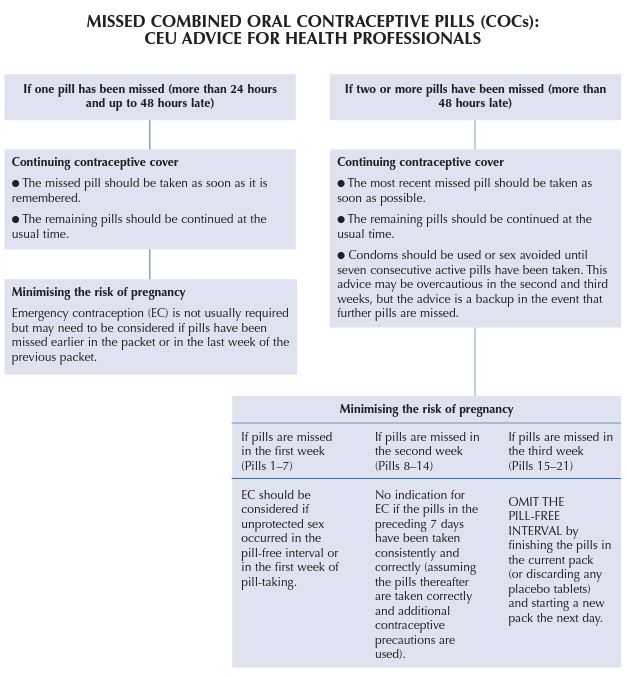
Structured counseling materials in CHOICE
-
Information leaflet provided to each participant
-
Presents the range of available hormonal contraceptives (pill,patch,ring)
-
Includes reference to alternative progestogen-only methods
-
Covers relevant information on each method, including:
-
Efficacy
-
Mode of action
-
Tolerability
-
Risks
-
Frequency of administration
-
How to use the method
-
Other information
Structured counseling materials in CHOICE

C. Egarter, et al. CHOICE: Women’s Reasons for Choosing the Pill, Patch or Ring in 11 Countries. Abstract at 9th Congress of the European So of ynecology, Copenhagen 2011
Myths & Facts About Hormonal Contraception
Is taking the pill associated with fewer health risks than pregnancy?
Answer: Only 4% strongly agreed!
Misperceptions about pills & pregnancy!
-
Women appear to overestimate the risk of hormonal contraception and underestimate the risk of pregnancy
-
They might not be aware of any additional non-contraceptive benefits
Strategies to improve adherence, acceptability, continuance of hormonal methods of contraception and to prevent unwanted pregnancies
-
Increase access to hormonal contraception
-
Dispel myths and misperceptions about hormonal contraception
-
Raise awareness and knowledge about additional benefits of hormonal contraception
-
Improve prescribing practice
-
Improve physicians knowledge
-
Improve patient knowledge
-
Improve patient satisfaction by understanding patient needs and addressing patient concerns
-
Structured counseling including the choice to choose
Myth(s): Using hormonal contraceptives leads to future infertility
Facts:
Studies confirm that hormonal contraceptive does not lead to infertility
-
Return of ovulation can occur as early as 2 weeks after cessation of hormonal contraception.
-
Advancing age plays a role in infertility (2)
-
A woman’s fertility peaks between the ages of 20 and 30
-
After 30, fertility slowly declines until menopause
-
Because a woman may not have tried to become pregnant before, she may not have been aware of any infertility issues
-
1 Hatcher RA, Trussel Nelson AL, Cates W Jr. Stewart F, Kowal Contraceptve Technology. 19th Ed. New York, NY: Ardent Media: 2007
2 Wilson JR, Carrington ER, Ledger WJ, eds. Obstetrics and Gynecology. 7th ed. St. Louis, MO: Mosby 1983.
Myth(s): Low dose pills are not as effective as higher dose pills
Facts:
Equal effectiveness of low-dose COCs supported by Cochrane review
-
In a systematic review comparing 13 COCs, no difference in pregnancy rates were found between the use of COCs at 20 µg vs >20 µg estrogen
-
Low-dose estrogen COCs may provide potential additional benefits:
-
Reduced vascular complications
-
Reduced hormone-withdrawal symptoms
-
-
Incidences of bleeding irregularities were higher with lower dose estrogen
Gallo MF et al. Cochrane Database Syst Rev 2005;18:CD003989

Myth(s): Pills cause acne
Facts:
Acne
-
Follicular plugging
-
Extension of follicle with sebum
-
Comedone rupture
-
Inflammation
-
Inflammatory cascade
Hormones
-
Androgens ↑ : sebum production ↑
-
SHBG ↑ : Free testosterone ↓ : sebum ↓
-
Oestrogens ↑ : sebum ↓
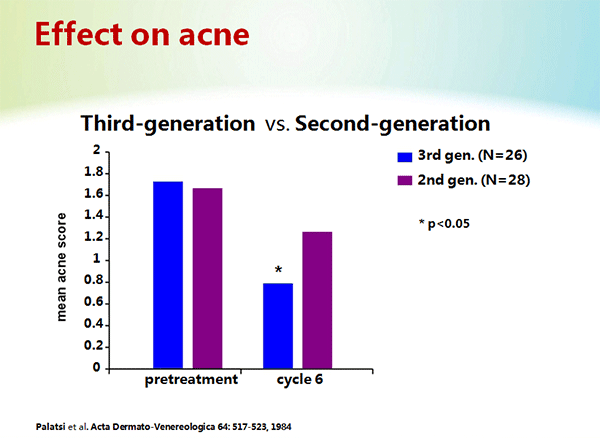
Myth(s): Doctor, will the pill give me blood clots?
Facts:
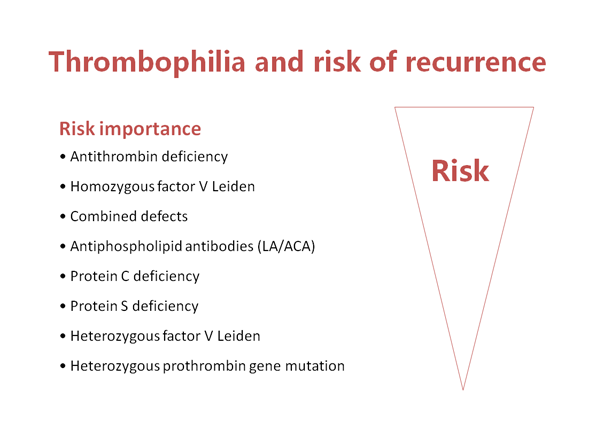
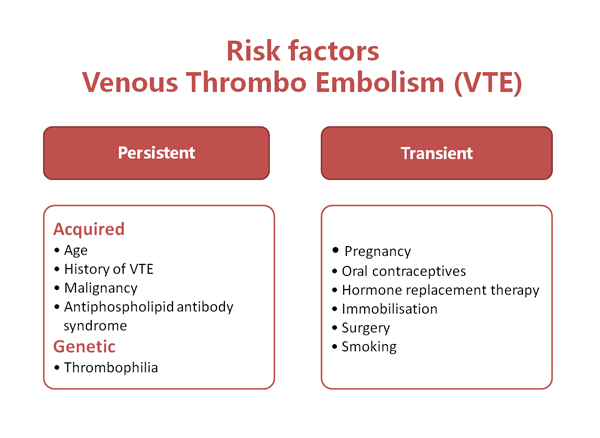
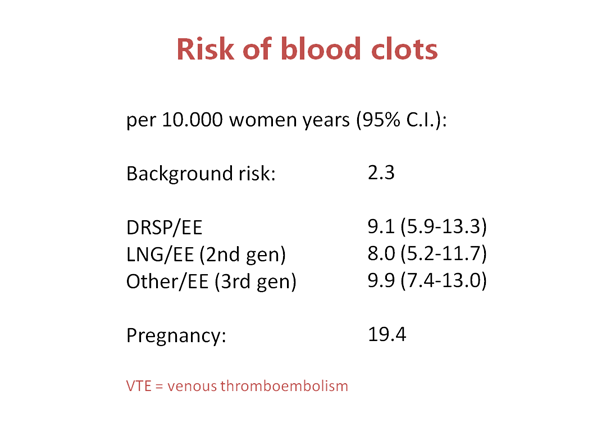
Anderson, Spencer. Circulation. 2003; 107: I-9-I-16
Severinseet al., Journal of Thrombosis and Haemostasis2009; 7; 1297-1303
Wai Khoon Ho et al.; Arch Intern Med 2006;166:729-736
Dinger J et al. The safety of a drospirenone-containing oral contraceptive: final results from the European Active Surveillance study on oral contraceptives based on 142.475 women-years of observation. Contraception 2007; 75:344-354
Myth(s): A woman should take breaks from taking hormonal contraceptives so her body can ‘get back to normal.’
Hormonal contraception disrupts the normal cycle of a woman’s body.
Facts:
Allowing your hormones to stabilize is a good reason to use hormonal contraception
-
Long term, continuous use of hormonal contraception has distinct benefit
-
Effective, continuous pregnancy prevention
-
Decreased risk of ovarian cancer, even after cessation of using hormonal contraception
-
-
Side effect(s) of hormonal contraceptives are usually transient and for most women conditions may improve in 3 cycles
-
Evidence suggests that side effect(s) may increase during a ‘break’ in contraceptive use in some women
-
Guillebaud J. Contraception: Your Questions Answered. 5ed. London, England: Churchill Livingstone; 2009
Sulak PJ, Scow RD, Preece C, Riggs MW, Kuehl TJ. Hormone withdrawal symptoms in oral contraceptive users. Obstet Gynec. 200:95(2);261-266.
Myth(s): An abortion is safer than taking hormones every day
Facts:
Hormonal contraceptives are safer than an abortion
-
The use of hormonal contraceptives is supported by the long history and extensive evidence-based clinical studies
-
1 in 4 abortions are unsafe and may result in complications that lead to temporary or permanent disability or even death
-
Unsafe abortions account for (1):
-
3% of maternal deaths, and
-
20% of the overall burden of maternal death and long term disability
-
1 Hatcher RA, Trussel J, Nelson AL, Cates W Jr., Stewart F, Kowal D. Contraceptive Technology. 19th ed. New York, NY: Ardent Media; 2007
References
1. Speroff L and Fritz MA. Regulation of the menstrual cycle In: Clinical Gynaecologic Endocrinology and Infertility. Philadelphia: Lippincott Williams & Wilkins 2005: 167-231; Oral Contraception: 861-942.
2. Griesinger G et al. J reprod Med. 2011, 56:279-300
3. Burkman R et al. Contraception 2011;84:19-34
4. Dhont M. Eur J Contraception Reprod Health care 2010;15 S12-S18
5. Lopez LM, Grimes DA, Gallo MF Schulz KF. Skin patch and Vaginal ring versus COC for contraception. Cochrane Database of Systemic reviews 2010, issue 3. Art no:CD00355
6. Sitruk-Ware R. Maturitas. 2008;61:151-157
7. Sitruk-Ware & Nath, Rev Endocrine Metabolic Disorders 2011; 12:63-67
8. Hannaforrd et al, BMJ 2010:346
9. Hunter et al. 2010 Cancer Epid Biomarkers Prev 19: 2496-2502
10. Costa A et al 2010 11th Congress of the Euro Soc of Contraception and Reproductive Health
11. Faculty of Reproductive and Sexual Healthcare, CEU statement, Missed Pill Recommendations, May 2011.
Congratulations
You have completed the course
Would you like to take the Test Quiz?
Disclaimer: The information contained in this website is for general information purposes only. The information is provided by OGSS Online Contraceptive Course and while we endeavour to keep the information up to date and correct, we make no representations or warranties of any kind, express or implied, about the completeness, accuracy, reliability, suitability or availability with respect to the website or the information, products, services, or related graphics contained on the website for any purpose. Any reliance you place on such information is therefore strictly at your own risk.